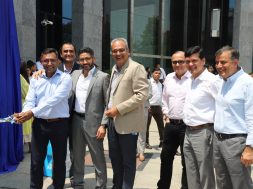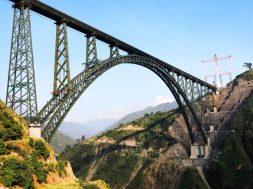Cement demand will be driven by government’s focus on infrastructure
Cement demand will be driven by government’s focus on infrastructure
“We had decided to reduce finance costs and improve margins, which we are doing successfully,” says Alok Sanghi, Director, Sanghi Industries Ltd.
The per-capita consumption of cement in India is a meagre of 250 kg, whereas in China the per-capita consumption is 1,380 kg. Yes, the growth potential is there and which is attracting major global cement players in India. In a conversation with ACE Update, Alok Sanghi, Director, Sanghi Industries Ltd., shares his insights on the cement market.
Cement industry witnessed a slowdown in FY11. How was the year 2012?The slowdown has continued in the fiscal year 2012. This is because of the falling demand due to high-interest rate. On the supply front, capacity expansion has continued, which has led to oversupply for the cement industry. As the interest rate is peaking, the demand is likely to change. Cement demand, going forward, will be driven by the government’s focus on the infrastructure development and promotion of low-cost affordable housing.
How is the cement industry shaping up?The potential for long-term growth is huge as the per-capita consumption of cement in India is a meagre 250 kg as against 1,380 kg in China (as of 2010-11) and the world average of 500 kg. This huge potential is attracting all global cement majors either through establishment of new plant or brownfield acquisitions. Over the next 5 years, however, the scenario is likely to be positive for the industry, as infrastructure spending gets a boost on the back of robust demand and lower interest rates.
Could you brief us on the recent demand-supply status?During the 5-year period of 2007-2012, the industry added around 150 million tonnes, taking the total capacity to over 300 million tonnes against consumption of around 240 million tonnes. Big companies are already in process of adding 70-80 million tonnes, which would result in excess capacity scenario for another 2-3 years.Brief us your performance during 2012, highlighting the major achievements.For the first quarter ending Sep 30, company reported net profit of Rs. 18.18 crore against last year’s net loss of Rs. 37.35 crore. Top-line grew by 37 per cent to Rs. 213.31 crore for the first quarter. For the June 2012 quarter, our top-line grew by 51 per cent to Rs. 294 crore. Net profit is not comparable as it includes interest write-back and tax write-back. In both quarters, profitability has improved because of the reduction in finance cost and higher top-line growth.
What was your target for the year 2012 and how far you have been able to achieve so far?We don’t fix targets as far as revenue and profitability are concerned. However, we had decided to reduce finance costs and improve margins, which we are doing successfully.
What are the challenges the cement industry in India is facing today, and how are you going to counter these?High taxation, rising raw material and transportation costs, and higher fuel costs are some of the major challenges. The overall rate of tax on cement is around 30 per cent in India compared to less than 20 per cent in most of the other Asian countries. We, at Sanghi Cement, have reduced fuel costs by around 20 per cent through installation of captive power plant. Raw material costs have been reduced by using waste instead of limestone in manufacturing of cement which also reduced environmental degradation. For reducing transportation costs, we have set up a sea terminal at Navlakhi in Rajkot district. By switching to sea route for logistics, we have reduced transportation costs by around 25 per cent.
What is your target for the coming year? How do you plan to achieve this?We’ve planned to reduce our debt by at least Rs. 100 crore by this fiscal end. We’ll be reducing debt by internal accruals.
Cookie Consent
We use cookies to personalize your experience. By continuing to visit this website you agree to our Terms & Conditions, Privacy Policy and Cookie Policy.









